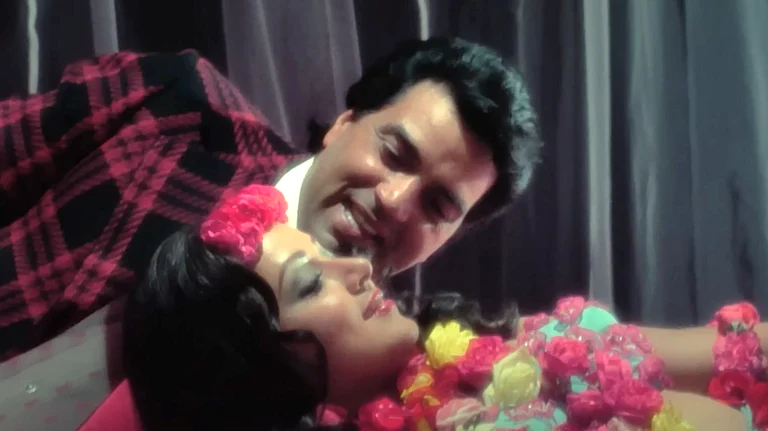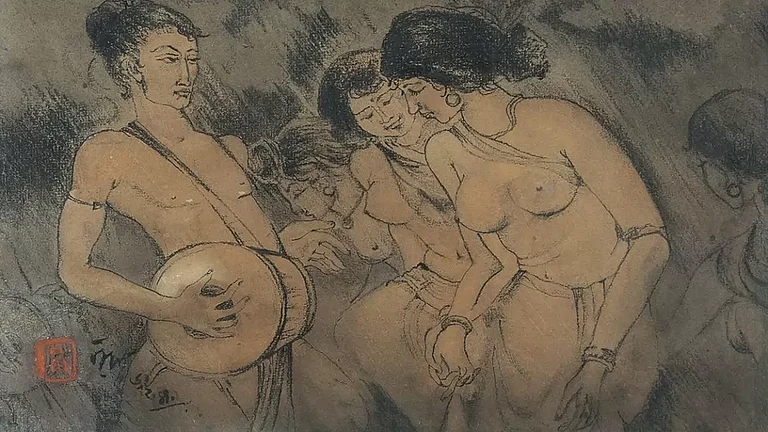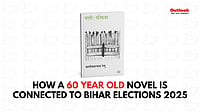
Oral traditions stayed in the margins and were showcased as artifacts.
It is wrong to apply Western theories of folk literature to India’s oral traditions.
These two volumes of Indian Literature offer astonishing insights into the plurality of cultures and languages.
Issues 348 and 349 of Indian Literature (a publication of the Sahitya Akademi), compiled under the guest editorship of poet and academic Sukrita Paul Kumar, focus on the rich oral traditions of India. While oral traditions have been transmitted across generations through folk songs, myths and narratives, they face the acute threat of erasure on account of several factors, including the overarching presence of dominant languages, migration of communities and lack of archiving methods.
In these two issues of Indian Literature, a focused effort has been made to collate the coloured threads of lore and songs running through the warp and weft of languages in celebration of nature, rituals, festivals, birth and death. As Kumar notes in her introduction, the advent of technology in the 17th century as well as the British occupation boosted the popularity of printed literature, shifting the focus from oral traditions to the printed word. With print culture occupying centre-stage, only the educated class could read, thus reinforcing the class and social hierarchies. So, oral traditions stayed in the margins and were studied to serve academic discourses or administrative convenience, showcasing them as exotic artefacts instead of living traditions.
In this context, it would be relevant to juxtapose the introduction by A.K. Ramanujan to ‘Another Harmony’, a collection of essays published in 1986 on the folklore of India as an outcome of numerous conferences and discussions on the topic between scholars. Ramanujan noted in it that India was once considered some to be the origin of nearly all European folk narratives. He also emphasised how two British civil servants, William Crooke and R.C. Temple, meticulously studied Indian customs and beliefs, collected oral texts, and published the transliterated originals to better grasp the mores of Indian society under their administrative control. In that sense, they had the objectivity and distance of an outsider’s gaze.
However, such studies coexisted with oppressive colonial legislations like the ‘Criminal Tribes Act’ introduced by the British, which extended to the whole of British India. These conferred vast powers on the local administration to declare and classify certain tribes or wandering groups as suspects. Such legislations may have silently eroded the fabric of tribal narratives and reshaped their collective memories. Ramanujan also referred to the works of Sarat Chandra Mitra, who had published articles discussing international parallels from before the turn-of-the-century till 1940.
It would be wrong to apply Western theories of folk literature to India’s oral traditions, Kumar cautions readers. Local beliefs and worldviews seep into the songs and tales that evolve in any particular community. Moreover, in the telling of the tales and in the mode of singing as well, the local forms and styles inevitably exert an influence. This is why alien norms and paradigms cannot be imposed on indigenous modes of expression, Kumar asserts.
Through the oral traditions of ‘Dree Busi’ and ‘Dree Ayu’ that form part of an important chapter of the Miji-Migun, the sacred literature of the Apatanis, the ancient agrarian community which lives in Arunachal Pradesh’s Ziro Valley, the knowledge of cultivation and habitat preservation in harmony with nature is transmitted. The language does not have a written script, but the translation reads like this:
“On our fertile land, we have sown our seed in plenty
that the ‘pengu’ our seasonal bird also enjoys a fair share.
Across our productive terrain, we have scattered kernels
That the ‘pugge’ our seasonal bird can also partake in the bounty.”
The Lailung, a metaphorical folk song sung by the Wancho people, a tribal community with a population of 56,866 (according to the 2011 Census) living in the remote Paktai range of eastern Arunachal Pradesh, expresses deep love and also relates to daily life. Interestingly, heated arguments were often exchanged through the medium of this song. Lailung has different forms such as Taniyu, Taisa, Maibat and Taisiat. The practice of singing Lailung is fading away because there are no platforms to host it. Equally vibrant is the ‘Hwi Hak’, the song of Jhum cultivation among the Molsom tribe.
In the section on Central India, the compilation focuses on a Bhojpuri song that seeks to set out counter-history:
“Of flesh and blood our body is made
The same as the body of a Brahman
Near the well we never go
Drinking water from the mud we take
With shoes we’re beaten, our hands and feet broken
Why do we have all this woe?”
The oral traditions of the Korku tribe, an indigenous community known for its deep connection with nature, traditional farming practices and linguistic heritage have narratives about how Ravana prayed to the primal deity, Lord Shiva, for the creation of human beings and how Moola and Moolai, the ancestors of the Korku tribe were created. It also has a narrative on Holi which is far removed from the mainstream mythology. This version of Holi seeks to immortalise the eternal love of Holika, the daughter of a Brahmin, and an Adivasi youth.
The Harbi and Bhatri songs of the Bastar community preserve indigenous wisdom and communal harmony.
“We will go to the Kurlu forest, my friends,
To which forest will we go my friends?
We will go to the Amla forest, my friends.”
The excerpt from the Bhil songs of Rajasthan and the Bhatiyali songs in Bangla act as alternative sites for reading history in the voices of the marginalised. The Goovaki songs in Tulu from South Karnataka and the songs of Malavettuva from North Malabar refer to the interconnection between human beings and nature. The Koothandavar Thiruvizha festival observed in Koovagam, Tamil Nadu, in the month of Chithra-Pournami, enables transpeople to register a presence in the socio-political landscape through the myth of Mohini and Aravan, the son believed to be born to Arjuna in Ulupi.
In the above-mentioned backdrop of counter-histories presented through lore and songs, volumes 348 and 349 of Indian Literature serve as a monumental effort to archive and document the oral traditions of India for posterity. The editorial note observes that while it is important to discern how the ‘local’ is so effective in oral traditions by way of language, geography and beliefs of the community, it is also crucial to see how many tales and songs connect with each other across the country. These two volumes of Indian Literature offer astonishing insights into the plurality of cultures and languages. They strip away the ethnicity tag and show the human beings, mapping their life and customs in a raw form, where they continue to sing their songs of resistance, existence and evolution.
(The reviewer is a poet and legal professional)



























